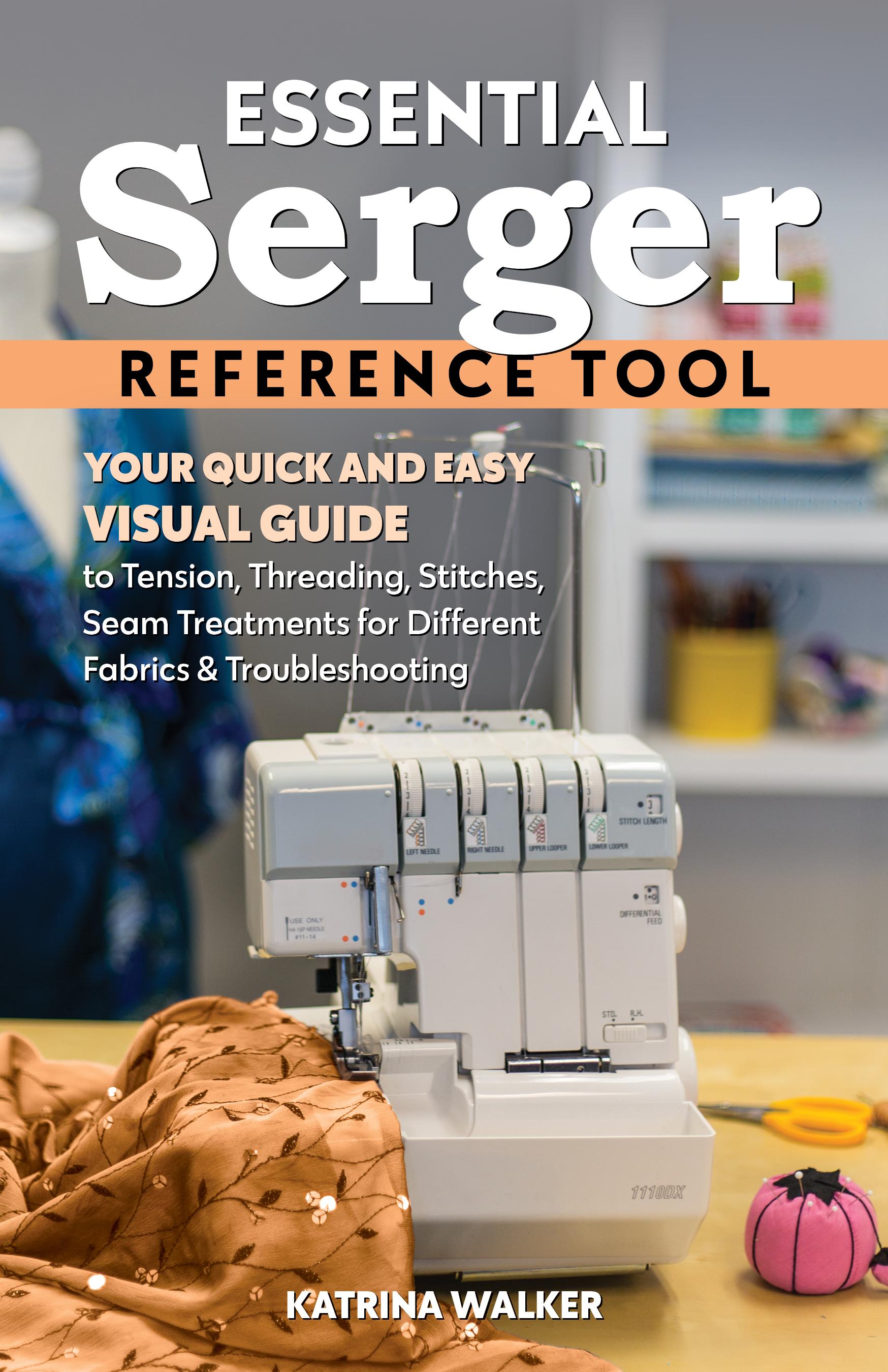Tips for Troubleshooting Serger Issues
Posted by Katrina Walker on Jun 17th 2024
Sergers (also called overlockers outside the United States) can be scary. I often wish I had a dollar for every time someone admits to me that they own a serger—but it’s still in the box!
That’s why I was so thrilled to have the opportunity to create Serger 101: A Field Guide. And now the super convenient Essential Serger Reference Tool! It’s wonderful to have the opportunity to share serger knowledge and
help it to be much less scary.
One of the reasons that sergers can be scary is because they create stitches a little differently than a traditional sewing machine. So there are some troubleshooting steps when things aren’t quite working that are very helpful to new (and experienced!) serger owners.
Here are some of my favorite tips
for troubleshooting any serger issues:
- Sergers must be threaded in the correct order for stitches to form. That order is usually:
- Upper Looper
- Lower Looper
- (Chain looper, if applicable)
- Right needle
- (Middle needle, if triple cover stitch)
- Left Needle
…that being said, there are some exceptions to the rule (air threading sergers in particular) for looper order, so always check your manual first!
- When you re-thread your serger, turn the hand wheel to form the first few stitches by hand to check that they are forming correctly.
- Always leave a long (3”-4”) chain tail when serging at the end of the seam to prevent seams from unraveling during construction or the serger from unthreading itself when starting to serge. Most will likely be serged off later during construction. Any tails left hanging can be easily sealed with fray check, knotted off, or pulled back through the stitches if they need to be“finished”. A little extra thread provides a lot of stitch insurance!
- Serger tension settings are merely guidelines…every fabric and serger is different! Many serger owners don’t realize that their cutting blade is the fastest and easiest way to adjust an overlock seam. Try these steps first rather than immediately trying to adjust thread tensions:
- If overlock loops are hanging over the edge of the fabric, try widening the cutting blade cutting line (move to the right). This is often an issue with thinner fabrics that may not “fill” the seam.
- If the edge of the fabric is curling inward, try narrowing the cutting width (move to the left).
Whether you are an experienced serger or overlocker, or just getting started – you will find my newest book, Essential Serger Reference Tool, to be a handy reference for your workspace. It’s full of information to build your serger skills, expand your knowledge, or find helpful tips for success.
Happy Serging!
—Katrina
...
Shop Serger 101: A Field Guide and Essential Serger Reference Tool at C&T Publishing
Want to learn more about serging? Join Katrina Walker's Creative Spark course, Sergers Made Simple: Basics and Beyond, to get pre-recorded and informative step-by-step instruction.
Katrina Walker began serging in junior high. Today, her highly-rated online classes have enrolled thousands of students worldwide. She teaches at national sewing events and guild conferences and has been featured in many magazines. She lives in Spokane, Washington. katrinawalker.com








